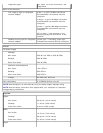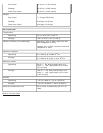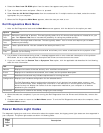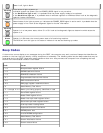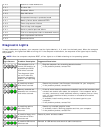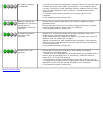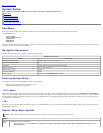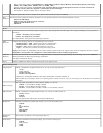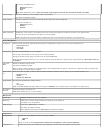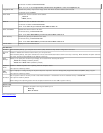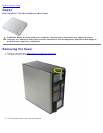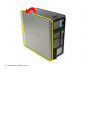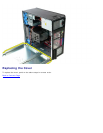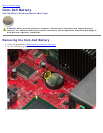
Memory information: Displays Installed Memory, Usable Memory, Memory Speed, Memory Channel Mode, Memory Technology,
DIMM_1 Size, DIMM_2 Size, DIMM_3 Size, and DIMM_4 Size. .
Processor information: Displays the Processor Type, Processor Speed, Processor Bus Speed, Processor L2 cache, Processor ID,
Microcode Version, Multi Core Capable and HT Capable 64-bit Technology..
PCI information: Displays available slots on the system board.
Date/Time Displays
the system date and time. Changes to the system date and time take effect immediately.
Boot
Sequence
Specifies the order in which the computer attempts to find an operating system from the devices specified in this list.
Onboard or USB Floppy
HDD(will show the model currently in system)
Onboard or USB CD-Rom Drive
USB Device
Drives
Diskette drive This field determines how the BIOS configures floppy drives, Operating Systems with USB support will recognize USB Floppy drives regardless of
this setting:
Disable - All Floppy drive are disable
Enable - All floppy drive are enable.
The "USB Controller" Setup option will affect floppy operation.
SATA
Operation
configures
the operating mode of the integrated hard drive controller.
RAID Autodetect / AHCI = RAID if signed drives, otherwise AHCI
RAID Autodetect / ATA= RAID if signed drives, otherwise ATA
RAID On / ATA= SATA is configured for RAID on every boot
Legacy = The hard drive controller is configured for legacy mode
Legacy mode provides for compatibility with some older operating systems that do not support native resources assigned to the drive controller.
RAID Mode is incompatible with ImageServer. Please disable RAID mode if enabling Image Server.
S.M.A.R.T.
Reporting
This field controls whether hard drive errors for integrated drives are reported during system startup. This technology is part of the SMART(Self
Monitoring Analysis and Reporting Technology) specification.
This option is disabled by default.
Drives Enables or disables the SATA or ATA drives connected to the system board.
System Configuration
Integrated NIC
Enables
or disables the integrated network card. You can set the integrated NIC to:
Disable
Enable (default)
Enable with PXE
Enable with ImageSever
ImageServe is incompatible with RAID mode. Please disable RAID if enabling ImageServer.
PXE is needed only if intending to boost to an operating system located on a server, not if you are booting on an OS located on a hard drive in
this system.
USB for Flexbay
This field enable and disable the internal USB for FlexBay, you can set:
Disable - Internal USB for FlexBay is disable
Enable - Internal USB for Flex Bay is enable
No Boot - Internal USB for Flex Bay is enable, but not bootable. (default)
USB Controller Enables or disables the integrated USB controller. You can set the USB controller to:
Enable (default)
Disable
No boot
Operating systems with USB support will recognize USB Storage
Parallel Port Identifies and defines the parallel port settings. You can set the parallel port to:
Disable
AT
PS/2 (default)
EPP
ECP No DMA
ECP DMA 1
ECP DMA 3
Parallel Port
Address
Sets the base I/O address of the integrated parallel port.
Serial Port #1
Identifies
and defines the serial port settings. You can set the serial port to:
Disable
Auto (default)
COM1
COM3



